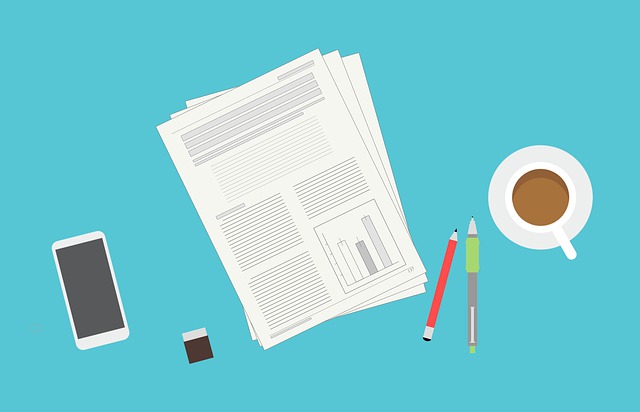Are you tired of sending out email campaigns without knowing if they’re actually effective? Do you want to take your email marketing to the next level and achieve better results? Look no further! In this article, we will delve into the world of email analytics and reporting to provide you with 10 tips for effective campaign monitoring.
Email marketing is not just about hitting the send button and hoping for the best. It requires a data-driven approach, analyzing the numbers, and making informed decisions based on the results. By implementing these tips, you will be able to track the success of your email campaigns, optimize your strategies, and ultimately increase your conversion rates.
From setting clear goals to segmenting your email lists, we will guide you through the essential steps of email campaign monitoring.
With the help of email tracking software and A/B testing, you will gain valuable insights into your subscribers’ behavior and preferences.
So, let’s dive in and discover how to make your email campaigns a roaring success with the power of analytics and reporting!
Key Takeaways
- Clear goals should be established for email campaigns to measure success accurately.
- Email tracking software provides valuable insights into campaign performance.
- Segmentation of email lists allows for personalized and targeted content.
- Optimizing subject lines can increase open rates.
Set Clear Goals for Your Email Campaigns
When setting up your email campaigns, it’s crucial to establish clear goals from the start to ensure effective monitoring and maximize your campaign’s success.
To define success for your email campaigns, you need to determine what actions you want your target audience to take after receiving your emails. Whether it’s making a purchase, signing up for a newsletter, or downloading a resource, having specific goals will help you measure the effectiveness of your campaigns accurately.
Additionally, consider your target audience when setting goals. Understand their needs, preferences, and behaviors to tailor your campaigns accordingly.
Once you have clear goals in mind, you can use email tracking software to monitor the performance of your campaigns, track open rates, click-through rates, and conversions. This data-driven approach will provide valuable insights for optimizing future campaigns and achieving better results.
Use Email Tracking Software
Maximize your impact with the power of email tracking software. By utilizing this tool, you can gain valuable insights into the performance of your email campaigns. Email tracking software provides numerous benefits, such as monitoring open rates, click-through rates, and conversion rates. It allows you to track individual subscriber behaviors, enabling you to tailor your content and improve engagement. However, it is important to be aware of the challenges that come with email tracking. Issues like privacy concerns and inaccurate data can arise. To help you understand the benefits and challenges of email tracking, refer to the table below:
| Email Tracking Benefits | Email Tracking Challenges |
|---|---|
| Measure campaign success | Privacy concerns |
| Identify effective content | Inaccurate data |
| Personalize email content | Technical difficulties |
| Improve email deliverability | Reporting complexities |
Now that you understand the benefits and challenges of email tracking, let’s move on to the next section about how to segment your email lists.
Segment Your Email Lists
To make your email marketing efforts more effective and engaging, imagine your email list as a garden and segment it like pruning different plants to ensure each one receives the right attention and care.
Customer segmentation is a crucial strategy that involves dividing your email list into smaller groups based on specific characteristics such as demographics, purchase history, or engagement level. This allows you to personalize your emails and deliver targeted content that resonates with each segment.
By segmenting your email lists, you can create more relevant and tailored messages, increasing the likelihood of engagement and conversions. Remember to constantly analyze and evaluate the data to refine your segmentation strategies. This data-driven approach will help you optimize your email campaigns and deliver better results.
Now, let’s dive into the next step: A/B testing your emails.
A/B Test Your Emails
Improve your email marketing strategy by conducting A/B tests to determine which elements of your emails resonate best with your audience. A/B testing allows you to compare different versions of your emails by varying one element at a time, such as subject lines, call-to-action buttons, or email templates. This data-driven approach helps you understand what works and what doesn’t, enabling you to personalize your emails and increase email deliverability.
Email personalization is crucial for connecting with your audience on a deeper level. By tailoring your emails to individual preferences, demographics, and behavior, you can create more engaging and relevant content that drives higher open and click-through rates.
Additionally, A/B testing helps you optimize your email deliverability by identifying factors that may affect your emails’ chances of reaching the inbox, such as sender name, subject line length, or email design.
Analyzing conversion rates is the next step in harnessing the power of email analytics to improve your campaign’s effectiveness.
Analyze Conversion Rates
By analyzing conversion rates, you can uncover the effectiveness of your email marketing efforts and determine whether your audience is taking the desired actions. Conversion metrics provide valuable insights into how well your emails are performing and can help you identify areas for improvement.
By tracking metrics such as click-through rates, purchase rates, and sign-up rates, you can gauge the success of your email campaigns and make data-driven decisions to optimize your strategy.
If your conversion rates are low, it may indicate that your emails are not resonating with your audience or that your call-to-action isn’t compelling enough. On the other hand, high conversion rates indicate that your emails are engaging and driving the desired outcomes.
By analyzing conversion rates, you can identify trends and patterns that can inform future email campaigns and continuously improve your email performance.
Continuously Improve Your Email Campaigns
Now that you’ve analyzed your conversion rates and identified areas for improvement, it’s time to continuously improve your email campaigns. This is crucial for maximizing your results and achieving higher open rates.
One key aspect to focus on is optimizing your subject lines. A compelling subject line can significantly increase the chances of your emails being opened and read. To improve open rates and optimize subject lines, consider the following strategies:
-
Personalization: Tailor your subject lines to each recipient by using their name or other relevant information.
-
A/B testing: Experiment with different subject lines and track their performance to identify the most effective ones.
-
Clear and concise messaging: Keep your subject lines short and to the point, highlighting the value or benefit of opening the email.
By implementing these tactics, you can enhance your email campaign’s effectiveness and ultimately drive greater engagement with your audience.
Frequently Asked Questions
How can I measure the success of my email campaign in terms of open rates and click-through rates?
To measure the success of your email campaign in terms of open rates and click-through rates, you need to focus on measuring engagement and analyzing click to open rates.
Engagement metrics, such as open rates, indicate how effective your subject lines and preheader text are in grabbing attention.
Click to open rates provide insights into the effectiveness of your email content and call-to-action.
By analyzing these metrics, you can identify areas for improvement and optimize your campaign to drive better results.
What are some best practices for segmenting email lists to target specific audience groups?
To effectively segment your email lists and target specific audience groups, start by implementing list cleaning techniques. Remove inactive subscribers and those who have previously unsubscribed.
Next, utilize personalization techniques to tailor your content to each segment. Collect data like demographics, past purchase behavior, and engagement levels to create targeted groups.
By analyzing this data, you can send relevant and personalized emails, increasing open rates and click-through rates, ultimately improving the success of your email campaign.
How do I conduct A/B testing for my emails and what metrics should I focus on?
To conduct A/B testing for your emails, start by creating two different versions of your email campaign. Divide your audience into two groups and send each group one version of the email.
Track key metrics such as open rates, click-through rates, and conversion rates to analyze the performance of each version. By comparing the results, you can identify which version resonates better with your audience.
This data-driven approach will help you optimize your email campaigns and improve your overall marketing strategy.
What are some key factors to consider when analyzing conversion rates from email campaigns?
When analyzing conversion rates from email campaigns, there are several key factors to consider that can optimize your results.
Conversion rate optimization is crucial in email campaign analysis. Focus on metrics like click-through rates, open rates, and bounce rates to gauge the effectiveness of your campaigns.
Analyze the behavior of your target audience and segment your email lists accordingly.
Test different call-to-action buttons and optimize your landing pages.
By meticulously analyzing these factors, you can improve your conversion rates and maximize the success of your email campaigns.
What are some effective strategies for improving the performance of my email campaigns over time?
To improve the performance of your email campaigns over time, focus on email personalization strategies and effective subject line techniques.
Personalize your emails by using dynamic content, segmentation, and personalized recommendations.
Experiment with different subject lines to find what resonates best with your audience.
Analyze data on open rates, click-through rates, and conversions to gain insights and make data-driven decisions.
Continuously test and optimize your campaigns based on these findings to drive better results and engagement with your emails.
Conclusion
Congratulations on completing the article! Now that you have mastered the art of email analytics and reporting, you’re well-equipped to monitor your email campaigns effectively.
By setting clear goals, using tracking software, segmenting your lists, and conducting A/B tests, you can optimize your campaigns to achieve maximum conversion rates.
Remember to continuously analyze your results and make improvements accordingly. With this data-driven approach, your email campaigns will reach new heights, connecting you with your audience in meaningful and impactful ways.
Keep up the great work and watch your success soar!








